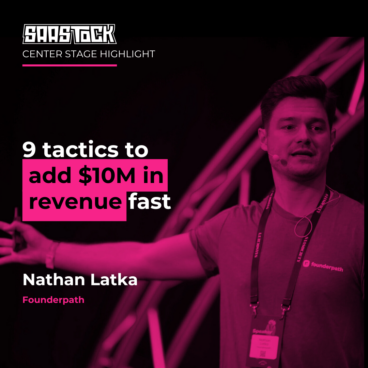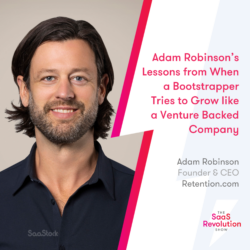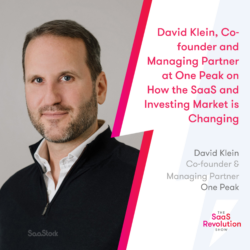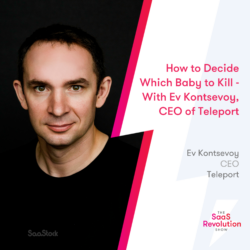How do you describe Nathan Latka? Podcast host? Wall Street Journal bestseller? CEO of Founderpath? SaaS investor-influencer? Nathan is, of course, all of these things, but our personal favourite…SaaStock speaker.
Taking a break from interviewing thousands of B2B software CEOs and financing hundreds of software founders without taking equity, Nathan Latka told SaaStock Europe how to grow revenue really quickly using nine real-life examples across different stages of growth.
0-$10 million
1. Zephyr – Launch professional services
According to Latka, “there’s no better way to make some cash flow and learn about your customers quickly” than launching a professional services company or agency. For example, London-based paywall software Zephyr found out that its media customers were using clunky software that required lots of professional services for their paywalls. Zephyr therefore wrote code and offered to build custom paywalls for the likes of the New York Times, and was eventually sold for $50 million to Zuora.
2. Peakon – Act on cold emails
Sending cold emails is only one half of the equation. Back in its very early stage, automated employee engagement platform Peakon, which helps companies gather, analyse and enhance employee sentiment, sent 250 cold emails to companies in Berlin and received a reply from the CFO of Delivery Hero. Peakon’s response? ‘We’re actually in Berlin tomorrow, let’s meet.’ They immediately bought plane tickets, jumped on a plane, pitched to Delivery Hero’s management team and came away with a contract and investment.
3. Calendly – Find your virality
Calendly has inherent virality: anytime you invite somebody to schedule a meeting with you, you end up introducing Calendly to them. Not every SaaS company is so fortunate, but if your product requires two people, it has inherent virality built-in that you can leverage to build your customer base. If not, think about how to use your onboarding channel to turn one user into two at the top of the funnel.
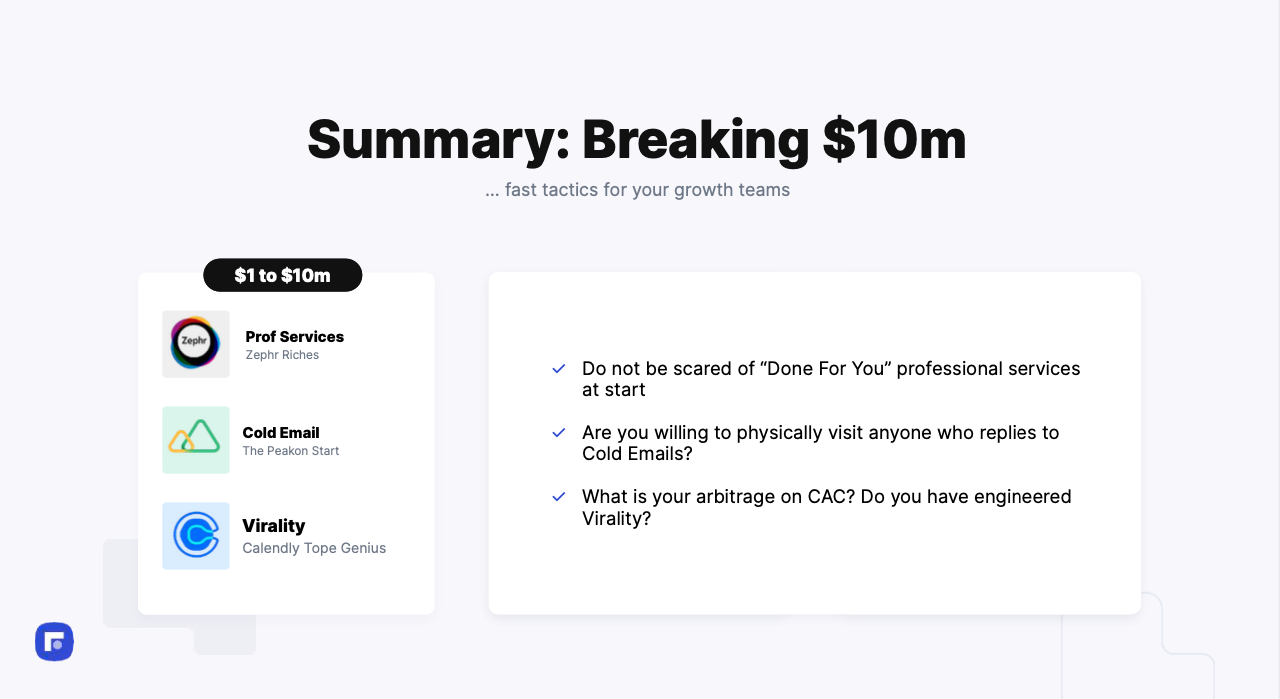
$10-50 million
4. Hotjar – Go 100% self-serve with freemium
Hotjar bootstrapped its way to 200,000 customers by using a bottom-up product-led growth (PLG) motion with a freemium offer. Allowing users to try the product for free with no credit card (i.e. unlike a free trial) enabled Hotjar to bring in customers early, better understand product-market fit (i.e. which customers are using which parts of the product more) and grow in a capital efficient way pre-revenue, before getting really aggressive with monetisation.
5. Phorest – Pivot your fails quickly
Freemium isn’t for everyone. Salon software Phorest gained loads of free users with freemium, but only a small proportion converted to paid customers. They pivoted to a paid-only model and did phenomenally well as the salon customers that signed up were serious about using the product and getting value from it. But perhaps their best pivot was in terms of distribution. Instead of paying loads for Google Ads, they took control of their distribution by creating their own physical ads, buying billboard space and even launching their own conference.
6. GloFox – Opt for harpoon-style SEO
When it comes to SEO, don’t cast your net wide, go targeted and go deep. Fitness management software GloFox, which streamlines payments, bookings, and processes for gyms and fitness businesses, adopted this approach to dominate search terms for their specific vertical and future-proof their growth for the AI era. In the near future, the likes of Gemini or ChatGPT will respond to questions like ‘what’s the best gym software’ with companies with the best SEO. If you don’t have a strong SEO base, you don’t even have a shot at showing up in the AI-generated results.
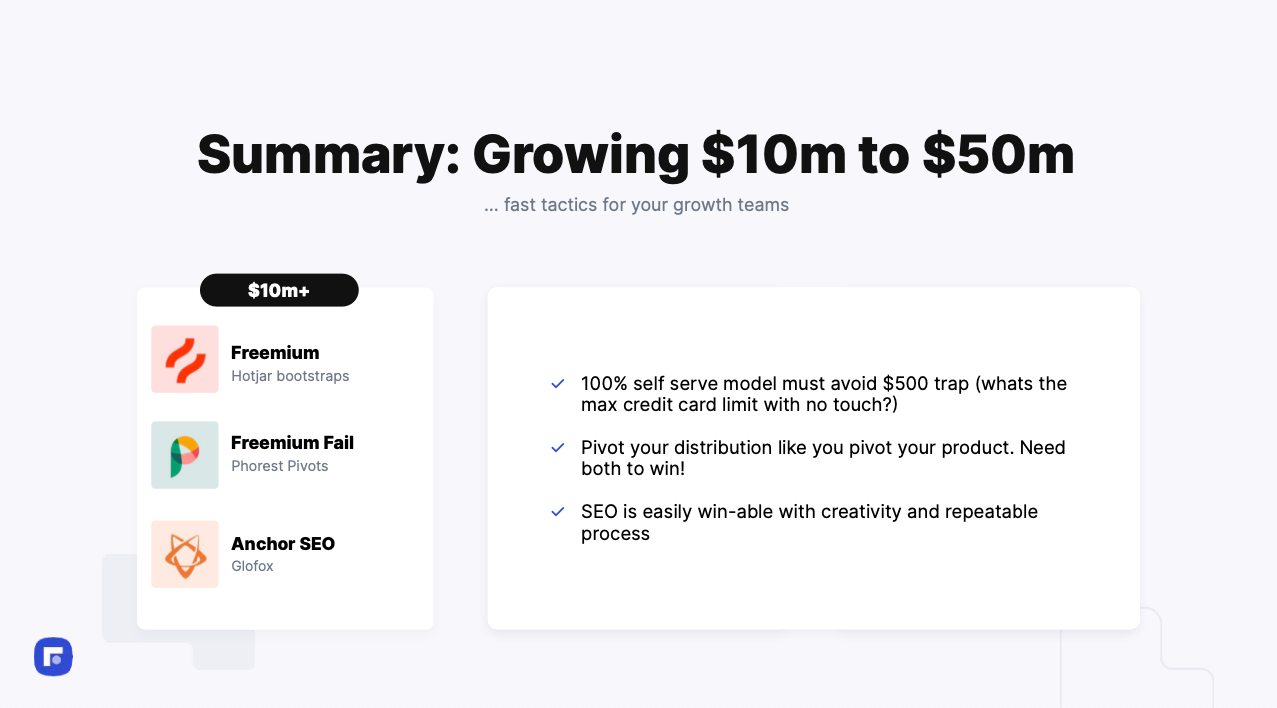
$50 million+
7. Getlatka.com – Ensure founder market fit
Latka asserts that “founder market fit is way more important than product market fit” and the “fastest way to revenue.” If your founder or founding team aligns with the software you’re selling, customers will believe you understand their problem and buy from you. The key is to get your founder front-and-centre (in Getlatka.com’s case that was Nathan writing books, publishing magazines and even appearing on billboards) to ultimately drive the growth of the SaaS business. The result? Getlatka.com grew to $150K MRR without a team.
8. Paddle – Leverage media
Taking away sleep time, there’s a maximum of 18 hours to capture the attention of your target customers each day. Paddle attacked this conundrum by creating Paddle Studios: a series of videos, podcasts, documentaries and guides on building better SaaS. Not only does this attract attention, but anytime spent on Paddle Studios is time not spent looking at competitors. What’s more, with the likes of GitHub making writing code easier, Latka thinks “media will be more important in the future” as attention – not code – will become the more scarce resource.
9. Pendo – Own your distribution channel
On the surface, Pendo is an AI-powered tool that delivers SaaS user insights, such as product managers analysing product usage data. But Pendo now also owns the largest festival of all things product-related, Pendomonium, which attracts a crowd of 2000+ product and digital leaders each year. You don’t have to be Pendo-sized to set up your own conference either. Phorest launched its Salon Owners Summit back in 2016 and now welcomes 600 owners to its two-day event in Ireland.
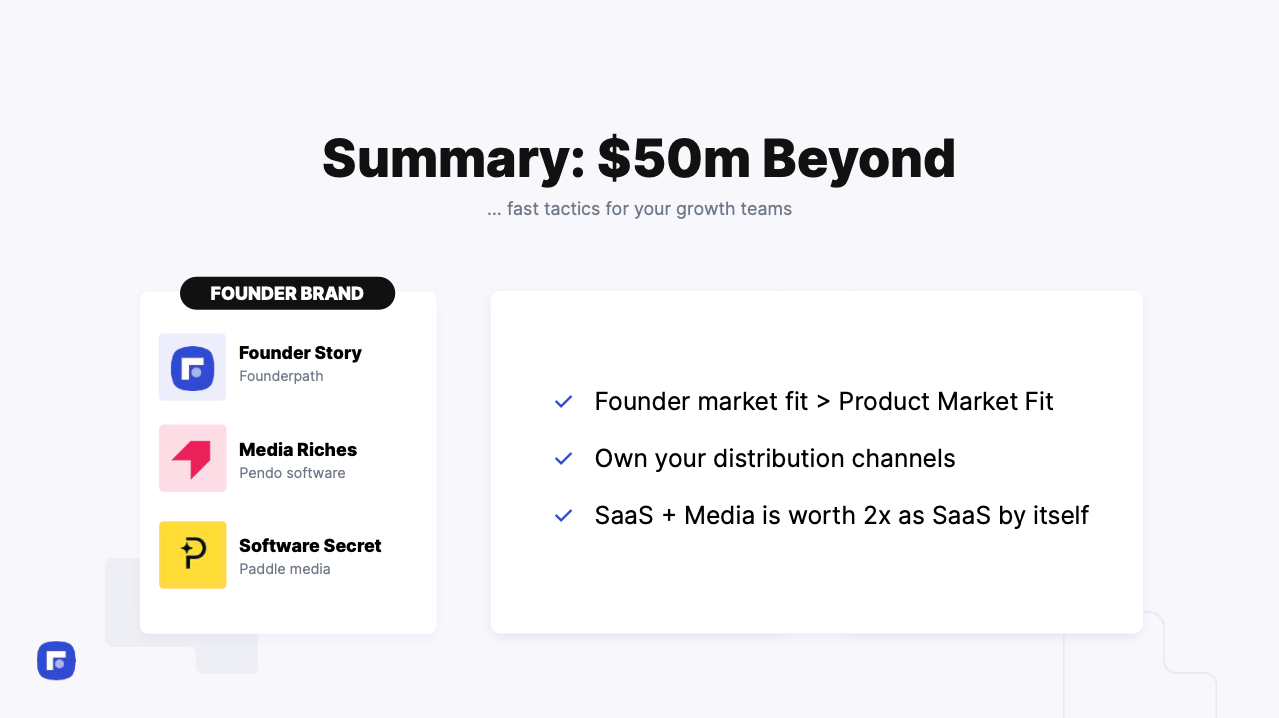
Two things in common: fast-growth and SaaStock
All of these nine SaaS companies have two things in common: they’ve grown quickly and they’ve graced the SaaStock stage in recent years.
To grow quickly, make sure to choose growth tactics for your growth stage. According to Latka, that should be:
- <$ 1 million ARR = Tactics that are cheap and work quickly
- $1-3 million ARR = Tactics that are cheap but take longer to pay off
- $3-5 million ARR = Tactics that are expensive (paid for) and work quickly
- $5-10 million ARR = Tactics that are expensive (paid for) and slow to pay back
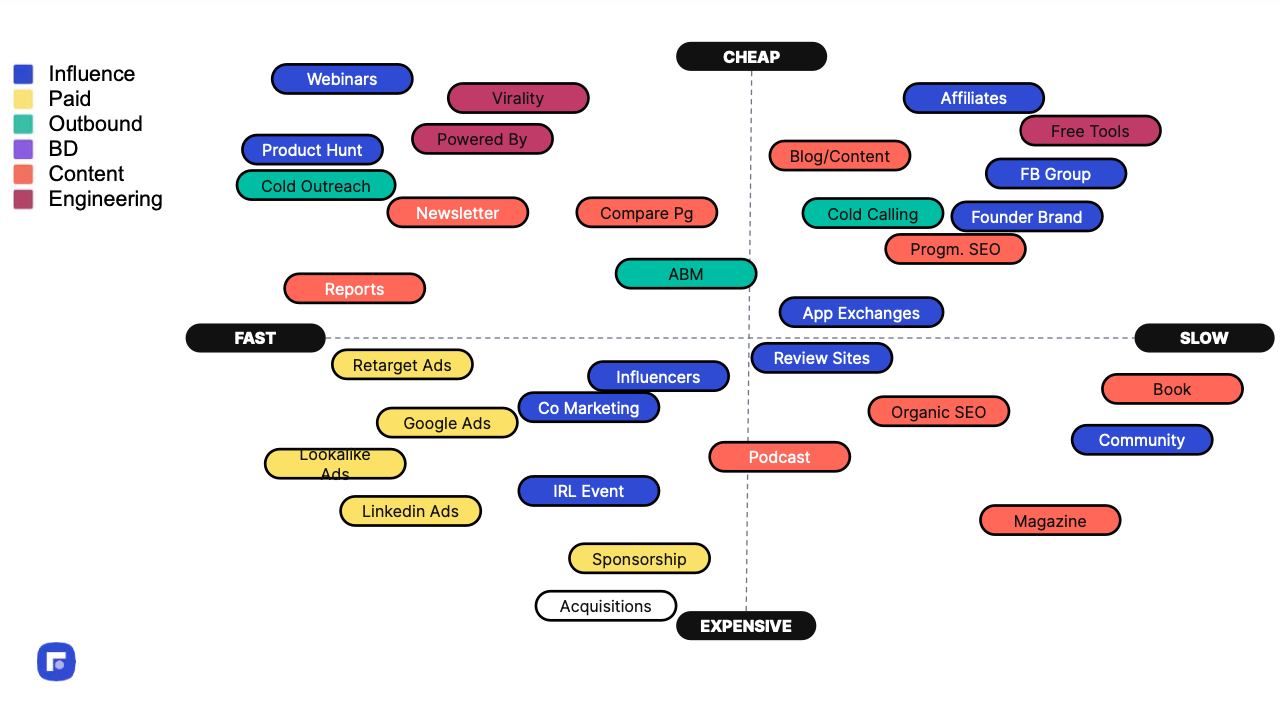
Catch up on the latest from SaaStock
- The truth about AI in SaaS: Nathan Latka Debates Microsoft’s CEO Prediction
- S**t is getting real: AI’s path to product-market fit (Des Traynor, Intercom)
- Why sharing your weaknesses elevates your leadership with G2 CEO Godard Abel
- From CFNo to CFGrow: 3 ways SaaS CFOs can influence GTM strategies in 2025
